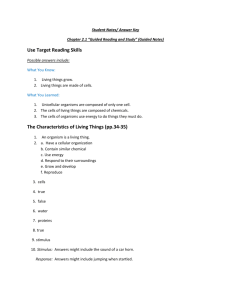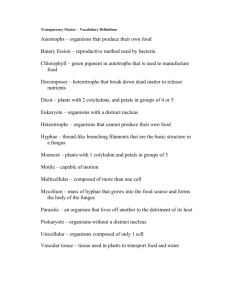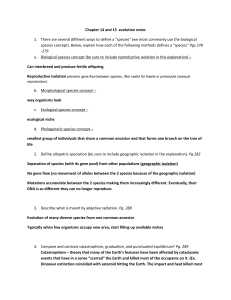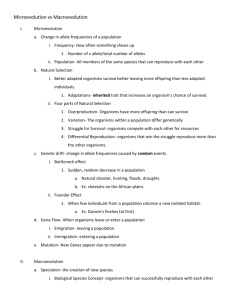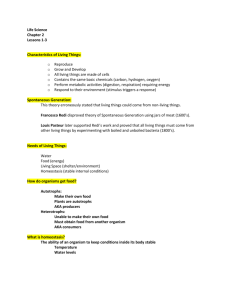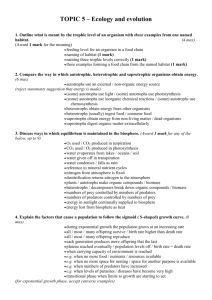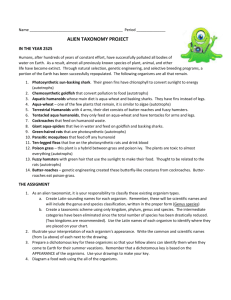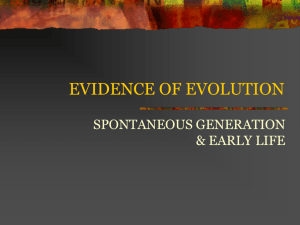Chapter 2 Sections 1 & 2 Packet pages 1-15 Pages 2
advertisement
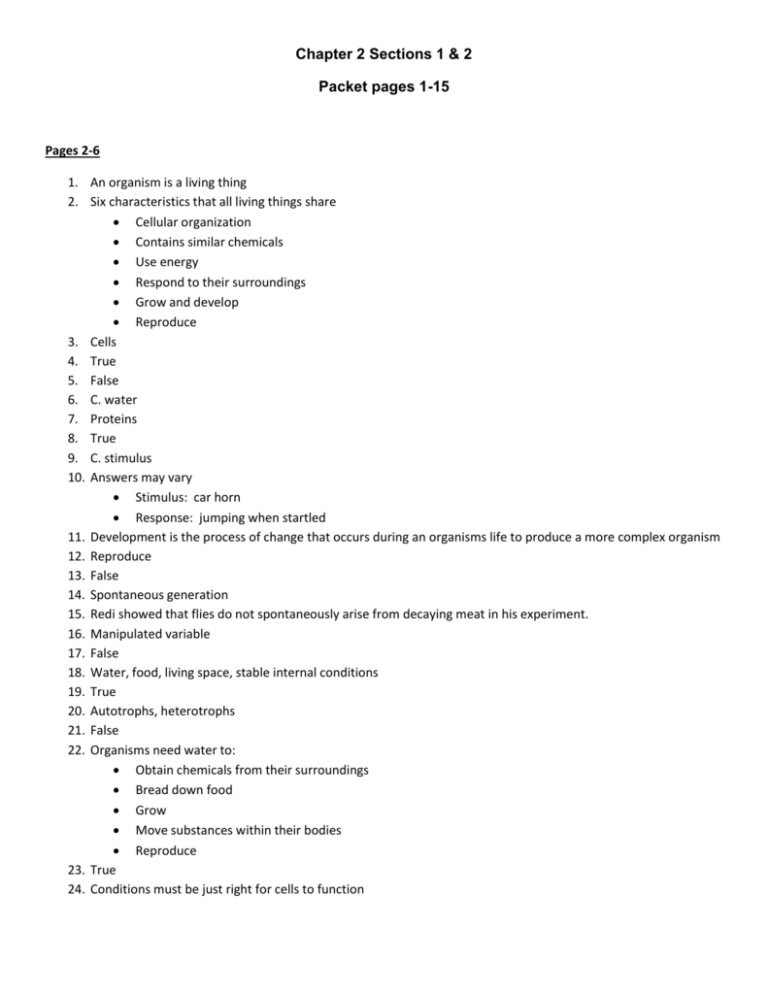
Chapter 2 Sections 1 & 2 Packet pages 1-15 Pages 2-6 1. An organism is a living thing 2. Six characteristics that all living things share Cellular organization Contains similar chemicals Use energy Respond to their surroundings Grow and develop Reproduce 3. Cells 4. True 5. False 6. C. water 7. Proteins 8. True 9. C. stimulus 10. Answers may vary Stimulus: car horn Response: jumping when startled 11. Development is the process of change that occurs during an organisms life to produce a more complex organism 12. Reproduce 13. False 14. Spontaneous generation 15. Redi showed that flies do not spontaneously arise from decaying meat in his experiment. 16. Manipulated variable 17. False 18. Water, food, living space, stable internal conditions 19. True 20. Autotrophs, heterotrophs 21. False 22. Organisms need water to: Obtain chemicals from their surroundings Bread down food Grow Move substances within their bodies Reproduce 23. True 24. Conditions must be just right for cells to function Page 7 1. All living things have cellular organization, contain similar chemicals, use energy, respond to their surroundings, grow and develop, and reproduce. 2. Redi’s experiment showed that flies do not spontaneously arise from rotting meat but are produced from the eggs of their flies. 3. Living things must satisfy basic needs for water, food, living space, and stable internal conditions. 4. Growth is the process of becoming larger, whereas development is the process of becoming more complex. 5. Stimulus 6. Autotrophs 7. Multicellular 8. Spontaneous generation 9. Organisms 10. Cell 11. Heterotrophs 12. Response 13. Manipulated variable 14. Homeostasis 15. Reproduce 16. Unicellular Pages 12-14 1. 2. 3. 4. 5. 6. 7. 8. 9. 10. Classification Biologists organize living things into groups so that the organisms are easier to study. Taxonomy True True Binomial nomenclature True Genus: Felis Species: Felis concolor A, B, D Levels of classification: Domain Kingdom Phylum Class Order Family Genus Species 11. true 12. The great horned owls belongs to the order Strigiformes 13. Domains of living things: a. Bacteria b. Archaea c. Eukarya 14. Organisms are placed in domains and kingdoms based on their: Types of cells Ability to make food Number of cells in their bodies 15. A, B 16. Nucleus 17. False 18. The hard conditions where they live are similar to those of ancient Earth. 19. True 20. Protists are eukaryotes – their cells contain nuclei 21. True 22. A, D 23. Autotrophs 24. False 25. B, C 26. True Page 15 1. Levels of classification: Domain, Kingdom, Phylum, Class, Order, Family, Genus, Species 2. Organisms are placed into domains and kingdoms by: Cell type Ability to make food Number of cells in their body 3. B 4. A 5. G 6. C 7. E 8. F 9. D 10. H
